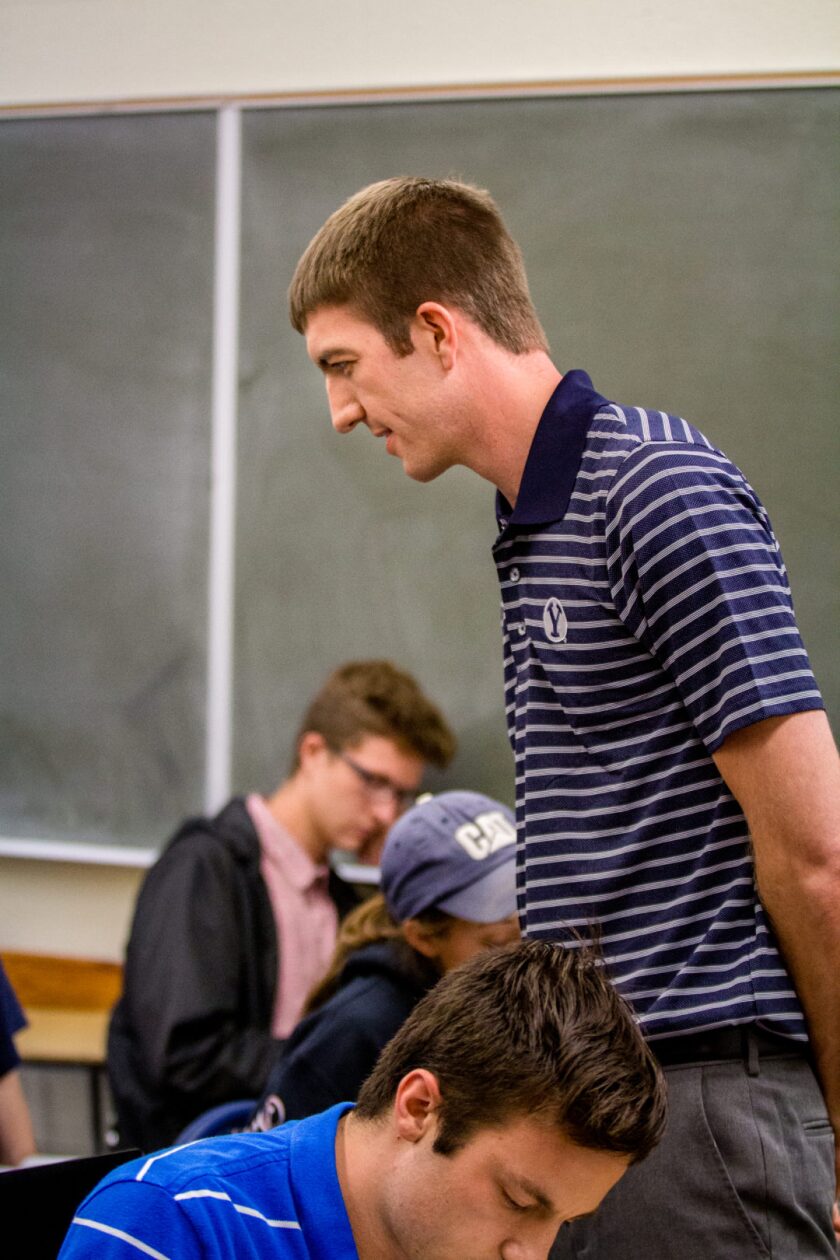
New math professor, Dr. Nathan Priddis, brings his teaching experience from Michigan and Germany to the BYU classroom.
Priddis taught undergraduate students at the University of Michigan, a university proud of its unique approach to teaching undergraduate mathematics, while he earned his PhD.
“When you are teaching [at Michigan], you are supposed to give five to ten minutes of instruction, then involve the students with exercises,” he said. “There is also a focus on conceptual understanding over computational ability.”
After Priddis graduated with his doctorate in 2014, he went to Germany, where he taught and researched until this August.
“In Germany, the teaching styles are very different. It seems kind of old. The teachers and students seem still pretty distant from each other. It’s also very formal,” Priddis said.
This variety of teaching experiences has helped Priddis develop his own style. He plans to keep his students working, and figuring out answers, not just listening. He wants his pupils to know they can talk to him during office hours.
“The biggest secret in college is to come talk to your professors and get to know them,” Priddis said. “And let them get to you know you.”
Priddis, together with his varied teaching experiences, also brings his passion for algebraic geometry.
“Tyler Jarvis is basically the only other algebraic geometry [researcher] at BYU besides me, as far as I know,” he said. “I think it is an important subject.”
Priddis uses algebraic geometry to research and explain string theory, which is the idea that the universe is made up of vibrating strings of energy. This theory tries to reconcile general relativity (gravity) and quantum physics, two aspects of physics that currently seem at odds with each other.
“It’s a very exciting area to research,” Priddis said.
String theory is not physically verifiable – yet – because testing it would require large amounts of energy, Priddis explained. However, many theoretical physicists still study it. The reason it requires so much energy is string theory predicts that we actually live in a 10 dimensional universe, not just the four dimensions that we perceive .
“The idea is that if you can see energy escaping into these other dimensions, then you’ve maybe given an indication that there are 10 dimensions instead of four. And so this is their idea of how to test string theory, but in order to do that, you have to achieve very high amounts of energy,” Priddis said.
But mathematical theories inspired by string theory are researchable and provable. This is one reason Priddis enjoys math and seeks out the mathematical side of string theory. He hopes to bring these new perspectives to his research.